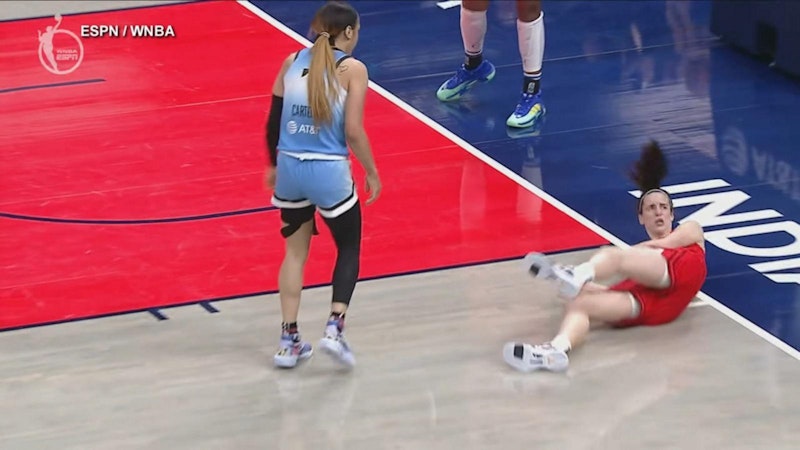The June 17 WNBA game between the Indiana Fever and the Connecticut Sun brought a raft of attention to the struggling basketball league, most of it negative. But that's not to say that one ugly game will hurt the league. The WNBA is desperate for attention, and attention is what it got from yet another case of the referees allowing its second-year superstar, Caitlin Clark (the only reason many people have heard of the WNBA), to get bullied all over the court. This game encapsulated why the WNBA is the most unlikeable sports league in the world.
How is it possible to like or respect a struggling, never-profitable league that, when it receives a gift like Clark—the biggest sports star of either sex in the world—and then stands by and watches as she gets abused by jealous competitors? Maybe WNBA commissioner Cathy Englebert is unable to understand that it's her duty to protect the goose that laid the golden egg. Englebert’s an accountant, but maybe she's forgotten to look at the Clark-era numbers. When the league’s superstar recently missed a stretch of games due to injury, WNBA viewership dropped by 50 percent.
During that June game, Sun player Jacy Sheldon intentionally poked Clark in the eye. As Clark held her hand to her eye, the Sun’s Marina Mabrey knocked her to the floor with a body check from behind. This happened right in front of a referee, who merely called a technical foul on Mabrey. One might get the idea that the refs are following league instructions to allow such bullying.
Sun player Sophie Cunningham, who looks more like a runway model than an “enforcer”-type player who happens to hold a black belt in taekwondo, realized she had to do a job that the officials are paid to do, so on a subsequent play she wrapped Sheldon in a headlock as the Sun player drove to the hoop and tossed her to the hardwood, drawing a level-2 flagrant foul—automatic ejection.
The incident was great for Cunningham, whose jersey quickly sold out, while her TikTok followers skyrocketed to over a million. But it was another black eye for the league that's so hard to like. Cunningham got ejected because the refs did nothing to control the game, and then the game got out of control. I've watched hundreds of NBA games, but I've never seen a player floor an opponent from behind right in front of the ref and get just a technical foul. The foul was later upgraded to a flagrant-2, but by that time it was too late.
How can anyone come to love a league when there are so few players in that league to love? In this season's all-star vote, 1.2 million fans voted for Caitlin Clark, the most in WNBA history, while in the media voting Clark ranked third. Meanwhile, the players voted Clark the ninth best guard in the league. While Clark’s been hampered by injuries this season, this vote reveals the level of jealousy towards the player who’s generated so much excitement, ticket sales, TV ratings, salary increases, and more charter flights than in the past. There’s speculation that much of the resentment towards Clark (who’s straight and white) is race- and/or sexuality-based. While there's no hard proof, it is hard to imagine Clark getting such a reception into the league if she were a black lesbian.
Approximately 64 percent of WNBA players are black, 19 percent are white, and nearly 11 percent of players identify as mixed race. As for sexual orientation, while about 33 percent of the players are openly lesbian, it's difficult to pinpoint a hard number. Some detractors call the WNBA a “lesbian league.” That's crude, but anyone wishing to categorically deny this should check out the Indiana Fever’s recent locker room celebration after winning the Commissioner's Cup tournament. As Clark bent over to talk into the live streaming camera, teammate Sydney Colson, an open lesbian, came up behind her and gave her and simulated humping her. You won't see such behavior streamed to the public in many sports leagues. Clark said, “No thanks,” and went on with her celebration.

